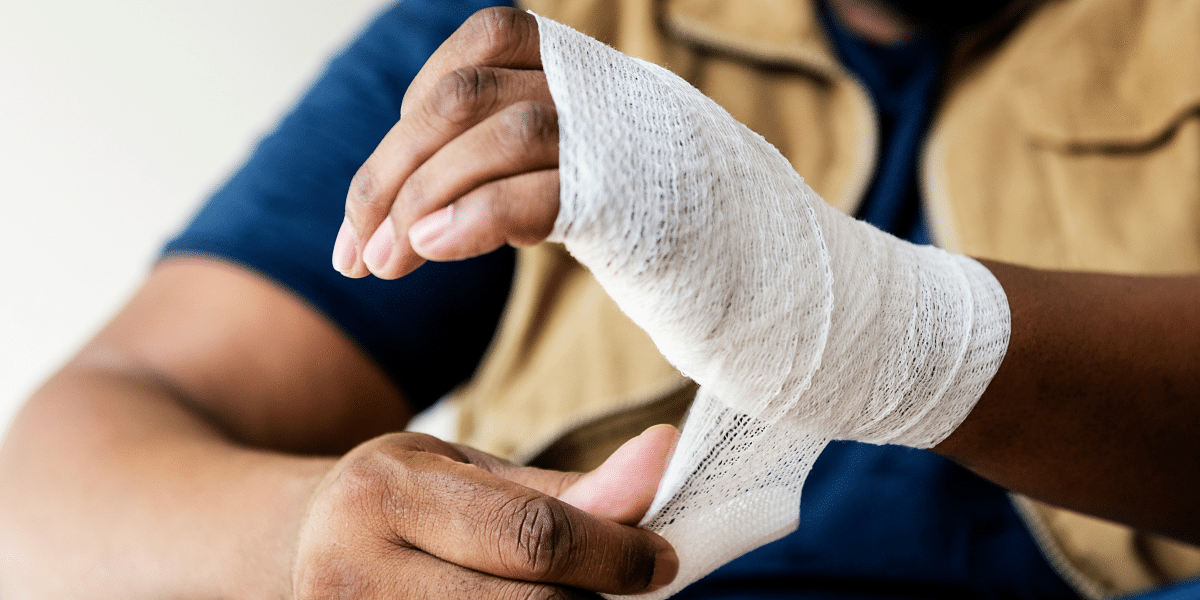When it comes to healing wounds, understanding the basics can make a significant difference in your recovery. The body’s natural process of wound healing is a remarkable and complex procedure involving a series of well-coordinated steps. However, misconceptions often cloud patients’ understanding, leading to anxiety or improper care.
Important questions about your health deserve clear answers which begin with understanding the essential phases of wound healing, debunking myths, and providing practical advice. By gaining insight into this vital process, you’ll be better equipped to manage your recovery and make informed decisions about your health.
The Phases of Wound Healing
The journey of wound healing is to bring you back to health. This process, the phase of wound healing, unfolds through three distinct stages: inflammatory, proliferative, and maturation.
When an injury occurs, the body immediately leaps into action. The inflammatory phase is the body’s emergency response rushing to the site of injury to stop bleeding and prevent infection. As blood vessels constrict to reduce blood flow, clotting factors gather at the wound to form a clot, a protective golden shield. This clot stops the bleeding and lays the groundwork for the following stages of healing. Simultaneously, inflammation kicks in, causing redness, warmth, and swelling. Though this may feel uncomfortable, it signals the body’s defense mechanism sending white blood cells to fend off any invaders and clear out dead tissue.
As the initial chaos begins to settle, the body shifts into the proliferative phase, where the focus is on rebuilding and restoring. New tissue starts to form, filling in the wound with granulation tissue, a bright red hue indicating a healthy supply of blood vessels and nutrients. Fibroblasts work diligently to produce collagen. Epithelial cells then migrate across this new fabric, covering and sealing the wound. This phase is essential for ensuring the integrity and proper coverage of the injured area.
Finally, the wound enters the maturation phase, where the focus is on refining and strengthening the newly formed tissue. Collagen fibers are realigned and strengthened, improving the tensile strength of the wound. Over time, the tissue becomes more flexible and resilient, slowly approaching its pre-injury state. Although scars may remain, the maturation phase ensures that the tissue is robust and less prone to future injury. With this knowledge, managing wounds and observing recovery can be less daunting and more empowering.
Factors Affecting Wound Healing
Wound healing is a complex process influenced by health conditions such as diabetes, obesity, and age. Diabetes slows healing by affecting blood flow and increasing infection risk. Obesity can delay healing by reducing blood flow while aging weakens the immune system and slows recovery. Understanding these factors helps patients and healthcare providers develop better strategies for improving outcomes.
Proper nutrition and hydration are essential for healing. Nutrients like proteins, vitamins, and zinc support tissue repair, while hydration ensures nutrients reach the wound. A balanced diet and sufficient water intake are vital for recovery.
“Keeping a wound clean is paramount to prevent infection, which can severely delay healing and lead to complications,” says Dr. Bardia Anvar, a noted surgeon and wound care specialist who established Skilled Wound Care as an answer to the need for timely, quality wound care. “Early detection and treatment of infections are key to avoiding further issues and promoting proper healing.”

When to Seek Medical Attention
Infections can hinder the healing process and put the patient at risk for more serious complications. Being vigilant about identifying these signs of infection is key. If you notice any changes around the wound area, it’s important to assess them critically. Redness and swelling usually accompany the initial healing phase, but increased redness that spreads beyond the wound border should raise concern. Similarly, swelling should subside progressively; any sudden increase might suggest infection.
Discharge is another telltale sign. While clear or slightly yellow fluid can be normal, a thick discharge, particularly if it’s green or foul-smelling, may indicate a bacterial infection. Tenderness or warmth around the wound can also be red flags, especially if they escalate. Lastly, if you experience fever or feel generally unwell, this may point to a systemic infection requiring immediate medical attention. Observing these signals and acting promptly can make a significant difference in the healing outcome.
Wound healing is a natural process, but it’s important to recognize when it’s not progressing as it should. If a wound remains open or unhealed for an extended period, it could be a sign that things aren’t moving in the right direction. The timeline for concern varies depending on the wound’s nature and location, but most minor wounds should show significant improvement within a week.
Chronic wounds or those that seem stagnant, not showing signs of shrinkage or change after this period, may require professional assessment. Factors like poor circulation, diabetes, or other underlying health issues might contribute to delayed healing, emphasizing the need for a healthcare provider’s input. Pain that’s worsening rather than easing can also be indicative of a problem. Seeking advice and addressing the underlying causes of delayed healing will help you find solutions and support quicker recovery.
Key Practices for Self-Care
While healthcare professionals provide essential guidance, adopting self-care techniques at home can significantly support the healing process. Patients can optimize recovery by focusing on wound cleaning, proper dressing, monitoring progress, and protecting the wound from environmental hazards.
Thorough cleaning is crucial in preventing infection and promoting healing. Start by washing hands, then gently rinse the wound with clean water or sterile saline solution. Avoid using alcohol or hydrogen peroxide, as they can harm healing tissue. Gently pat the wound dry with a clean cloth or gauze.
Choosing the right dressing depends on the wound type. Small cuts may need adhesive bandages, while larger wounds might require gauze and tape. Change dressings daily or when wet, ensuring they remain clean and sterile. Proper dressing helps protect the wound from environmental hazards like dirt, bacteria, and moisture, reducing the risk of infection.
Monitoring the wound’s healing progress is key. Healthy wounds typically shrink and develop new skin, while unusual changes may indicate infection. Documenting changes helps track progress, and prompt consultation with a healthcare professional ensures timely intervention.
Understanding the wound healing process and adopting best self-care practices empowers patients to take control of their recovery, promoting both physical healing and peace of mind, while shielding the wound from environmental threats.
Disclaimer: The products discussed in this article have not been evaluated by the Food and Drug Administration (FDA). These products are not intended to diagnose, treat, cure, or prevent any disease. The information provided is for educational purposes only and is not a substitute for professional medical advice, diagnosis, or treatment. Always seek the advice of your physician or other qualified health provider with any questions you may have regarding a medical condition.
Published by Elle G.

















